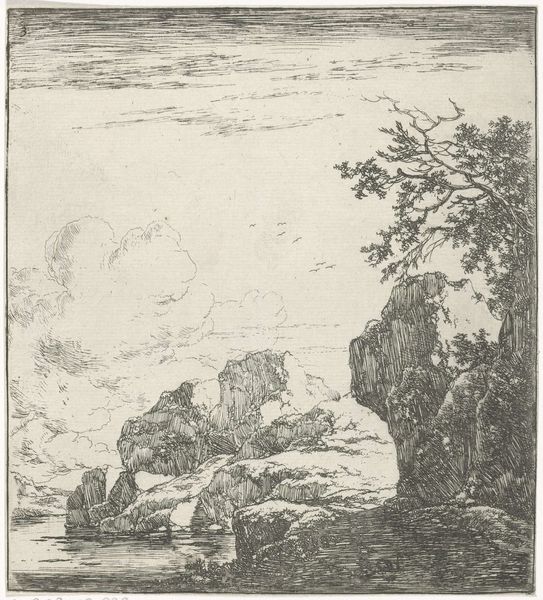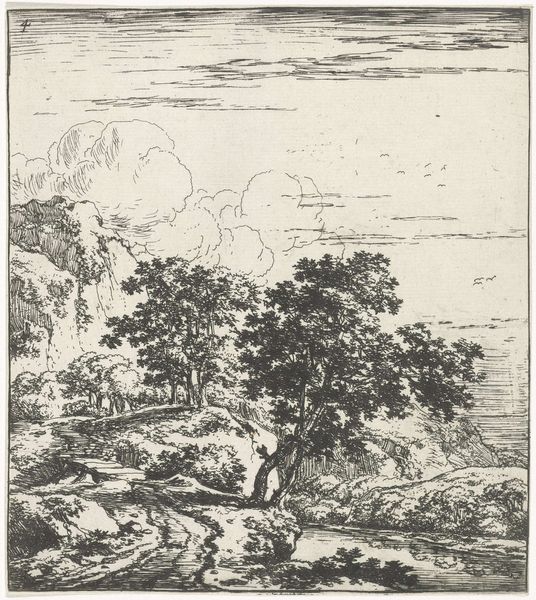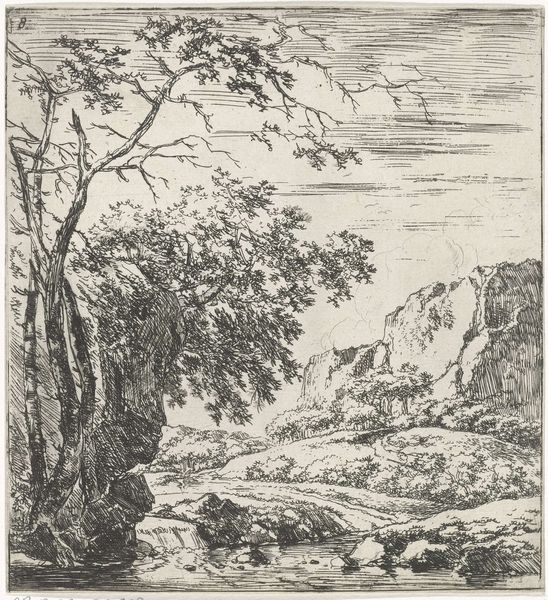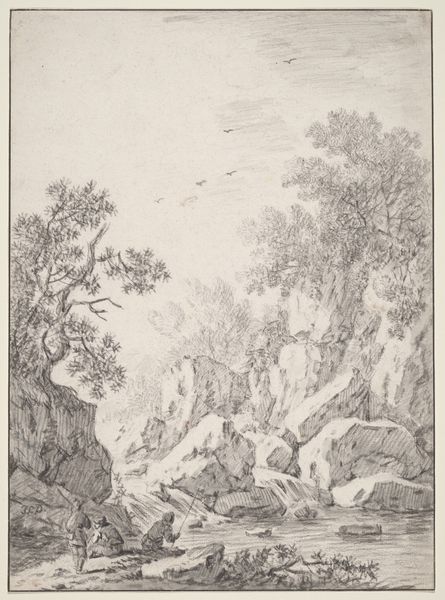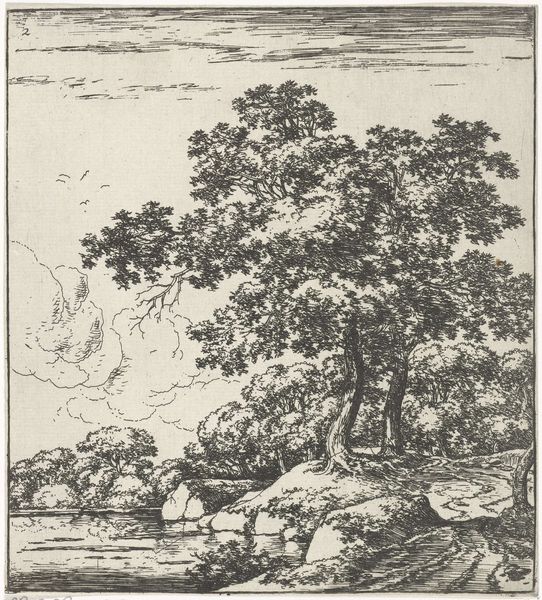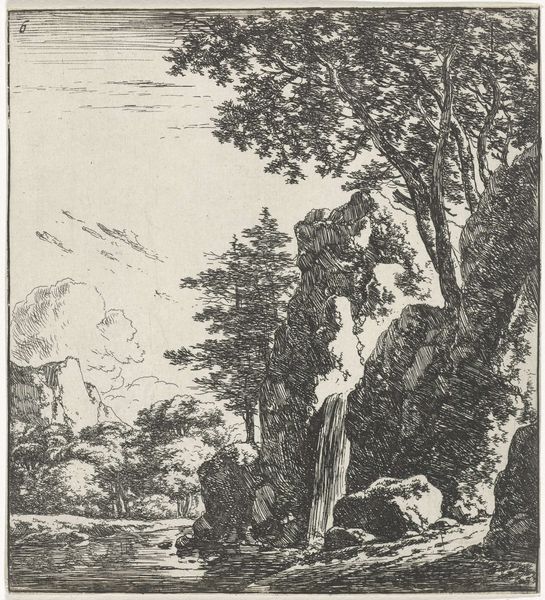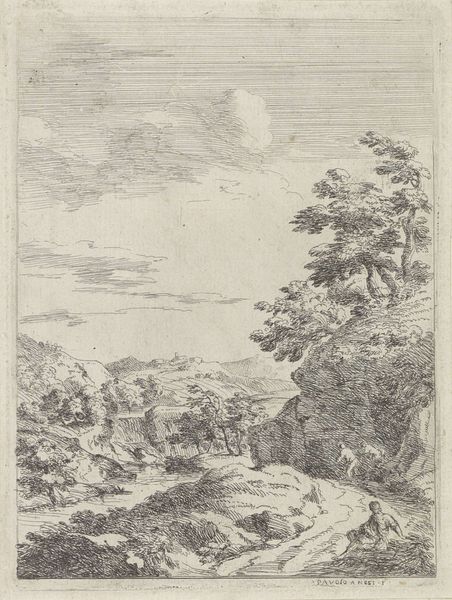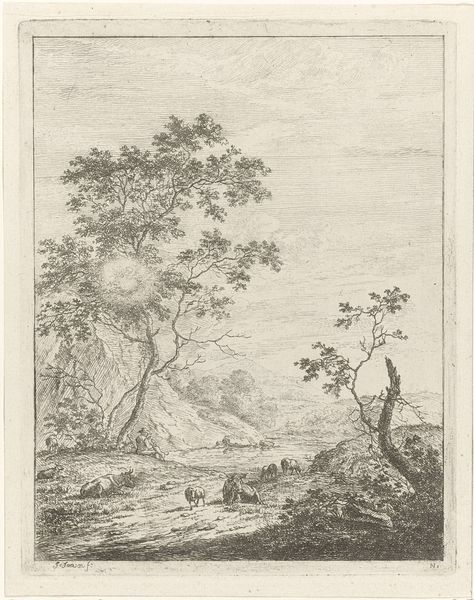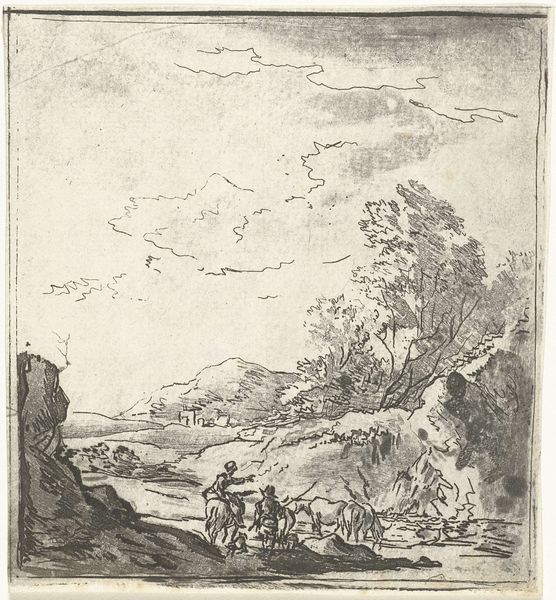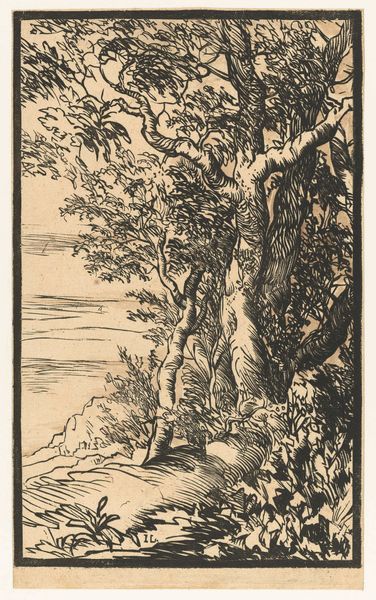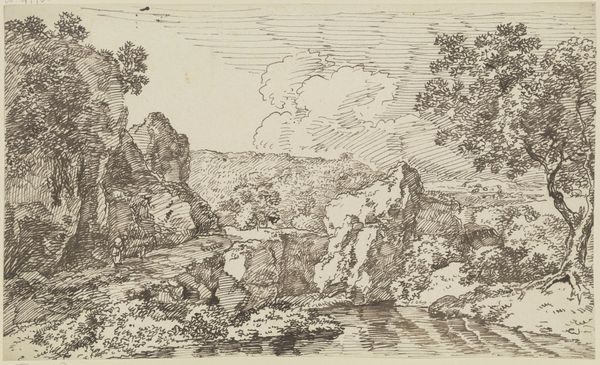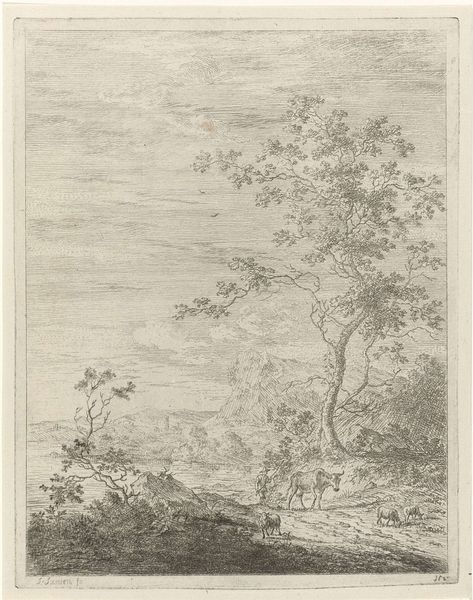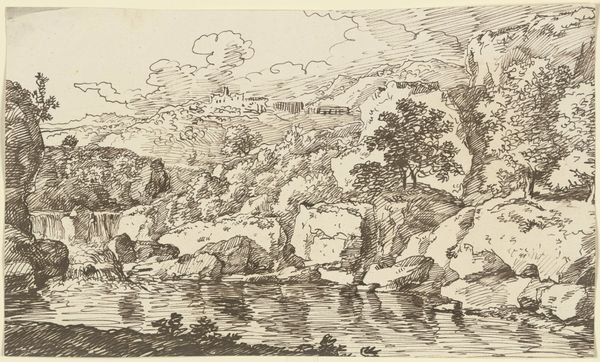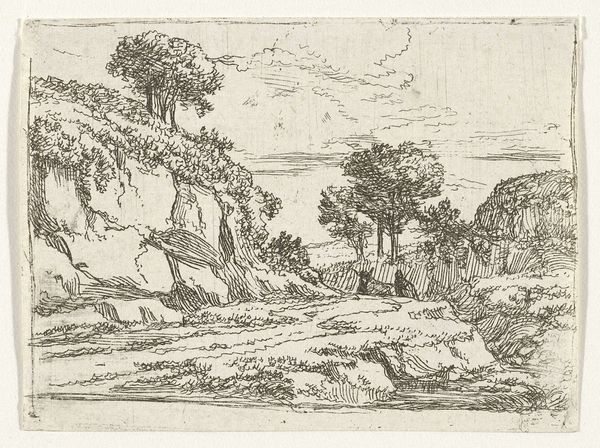
drawing, etching, ink
#
tree
#
landscape illustration sketch
#
drawing
#
quirky sketch
#
dutch-golden-age
#
pen sketch
#
etching
#
pencil sketch
#
landscape
#
river
#
personal sketchbook
#
ink
#
ink drawing experimentation
#
pen-ink sketch
#
pen work
#
sketchbook drawing
#
sketchbook art
Dimensions: height 132 mm, width 120 mm
Copyright: Rijks Museum: Open Domain
Curator: Here we have "River Between the Rocks," a pen and ink drawing, and an etching by Herman Naiwincx dating from approximately 1633 to 1670. Editor: It strikes me as quite serene. There's a sense of depth created by the varying line weights, the dense foreground resolving into lighter, almost ethereal rock formations in the distance. Curator: Indeed. Naiwincx’s skillful manipulation of line—from the intricate foliage to the sweeping skies—draws us into this Dutch Golden Age landscape. Look how the dense network of lines gives way to sparse areas. Semiotically speaking, one might suggest that the detailed foreground symbolizes an understood known realm transitioning into less charted, even possibly unknowable spheres, and hence communicates discovery or freedom to travel the natural landscape. Editor: The prominence of landscapes in the Dutch Golden Age speaks volumes about the society of that era. Land wasn’t just scenery; it was wealth, power, national identity and, especially after independence, freedom. Naiwincx, though not one of the most recognized landscape artists, still played a part in formulating these potent symbols and making landscape a major genre of Dutch art. Curator: Absolutely. Structurally, the work is quite sound; its tonality, texture, linear perspectives are carefully constructed. There is tension, however, given the size and scale of the natural landscape, and the sense of nature's indifference. Naiwincx's method allows us to engage deeply with a composition that teeters between chaos and visual structure. Editor: And it's important to remember these drawings often served as preparatory studies. Naiwincx was part of a growing art market in the 17th century and drawings were more frequently collected in their own right, giving artists increasing freedom in experimenting. These sketches, in many cases, would likely be shown to prospective buyers or commissioned for larger paintings, but here the sketch embodies the journey of seeing itself, allowing us today to reflect on both art and commerce within this historical moment. Curator: A fascinating point about that intersection between studio practice and marketplace visibility! It reinforces how the artist and patron engaged in an ongoing creative dialogue through materiality itself. Editor: Yes, exactly. Studying this artwork allows one to appreciate Dutch identity as expressed through landscape. Thanks for sharing your perspective. Curator: And thank you; that's given me new avenues for looking.
Comments
No comments
Be the first to comment and join the conversation on the ultimate creative platform.
